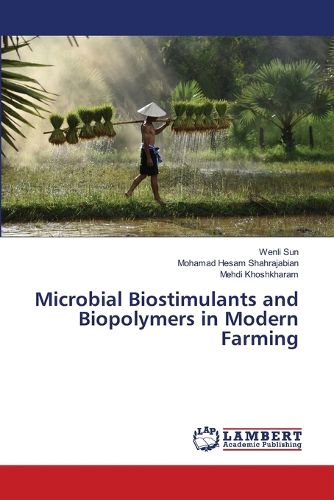Readings Newsletter
Become a Readings Member to make your shopping experience even easier.
Sign in or sign up for free!
You’re not far away from qualifying for FREE standard shipping within Australia
You’ve qualified for FREE standard shipping within Australia
The cart is loading…






This title is printed to order. This book may have been self-published. If so, we cannot guarantee the quality of the content. In the main most books will have gone through the editing process however some may not. We therefore suggest that you be aware of this before ordering this book. If in doubt check either the author or publisher’s details as we are unable to accept any returns unless they are faulty. Please contact us if you have any questions.
Biostimulants utilization can be considered as a sustainable and beneficial nutritional crop management, and may decrease the negative impacts associated with excessive chemical fertilization. Chitosan has effects on plant pathogens, plant productivity, and growth of horticultural plants and fruits which show its promising roles for permitting cultivation under drought conditions in arid and semi-arid regions. Chitin is also biodegradable, biocompatible and non-toxic polymer, which is considered recently in agricultural and horticultural production with consideration for sustainable agriculture. The most well-known bacteria which have been used as biostimulants are Artherobacter spp., Acinetobacter spp., Enterobacter spp., Pseudomonas spp., Ochrobactrum spp., Bacilus spp., and Rhodococcus spp. Glomus intraradices inoculation can improve drought tolerance of the host plant through mediation by protein with chaperone-like characteristics. It can also increase the growth characteristics of many plants due to increasing absorption of macro and micro elements.
$9.00 standard shipping within Australia
FREE standard shipping within Australia for orders over $100.00
Express & International shipping calculated at checkout
Stock availability can be subject to change without notice. We recommend calling the shop or contacting our online team to check availability of low stock items. Please see our Shopping Online page for more details.
This title is printed to order. This book may have been self-published. If so, we cannot guarantee the quality of the content. In the main most books will have gone through the editing process however some may not. We therefore suggest that you be aware of this before ordering this book. If in doubt check either the author or publisher’s details as we are unable to accept any returns unless they are faulty. Please contact us if you have any questions.
Biostimulants utilization can be considered as a sustainable and beneficial nutritional crop management, and may decrease the negative impacts associated with excessive chemical fertilization. Chitosan has effects on plant pathogens, plant productivity, and growth of horticultural plants and fruits which show its promising roles for permitting cultivation under drought conditions in arid and semi-arid regions. Chitin is also biodegradable, biocompatible and non-toxic polymer, which is considered recently in agricultural and horticultural production with consideration for sustainable agriculture. The most well-known bacteria which have been used as biostimulants are Artherobacter spp., Acinetobacter spp., Enterobacter spp., Pseudomonas spp., Ochrobactrum spp., Bacilus spp., and Rhodococcus spp. Glomus intraradices inoculation can improve drought tolerance of the host plant through mediation by protein with chaperone-like characteristics. It can also increase the growth characteristics of many plants due to increasing absorption of macro and micro elements.